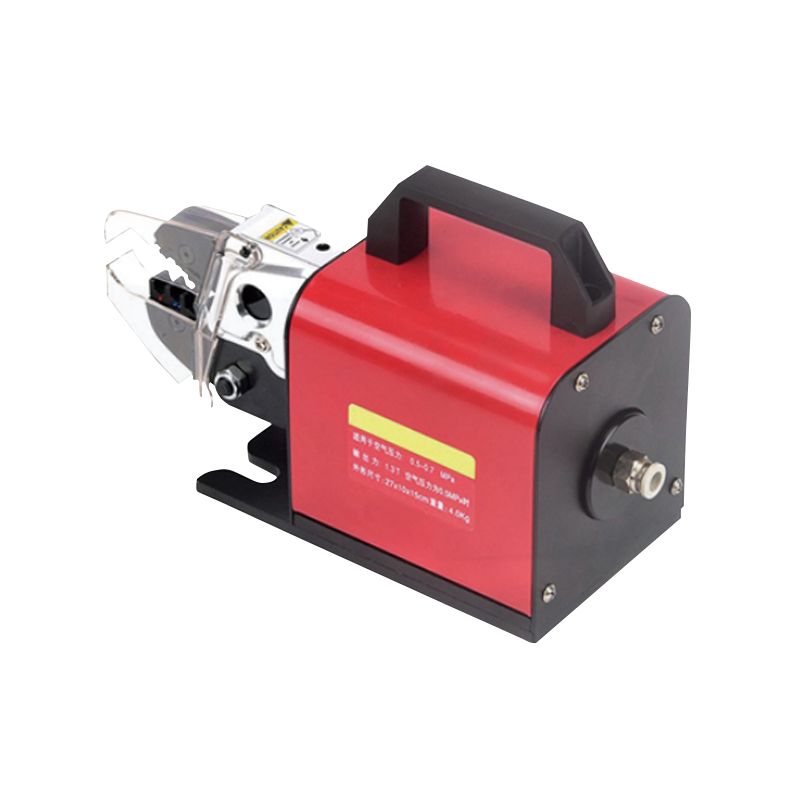Electric Terminal Crimp Machines vs. Manual Crimping: Which Is Right for You?
In the rapidly evolving world of electrical engineering and manufacturing, the process of crimping terminals to wires is a fundamental task that can significantly impact productivity, quality, and overall efficiency. With the advent of advanced technologies, the age-old debate between manual crimping and the use of electric terminal crimp machines has taken center stage. As industries strive for precision and speed, understanding the nuances of each method is crucial for making informed decisions.
Manual crimping has been a cornerstone of electrical work for decades. It relies on the skill and dexterity of the worker, who uses hand tools to apply pressure to the terminal, securing it to the wire. This method is often favored for its simplicity and low initial cost. However, manual crimping is not without its drawbacks. The quality of the crimp can vary significantly based on the experience and consistency of the operator. Fatigue and human error can to subpar crimps, which may result in poor electrical connections and potential safety hazards.
Enter the electric terminal crimp machine, a technological marvel that has revolutionized the crimping process. These machines offer a level of precision and consistency that manual crimping simply cannot match. By automating the crimping process, electric terminal crimp machines eliminate the variability associated with human operators. Each crimp is executed with the same force and accuracy, ensuring a reliable and high-quality connection every time.
One of the significant advantages of electric terminal crimp machines is their ability to handle high volumes of work efficiently. In industries such as automotive manufacturing, aerospace, and telecommunications, where thousands of crimps may be required daily, these machines can significantly boost productivity. For example, a single electric terminal crimp machine can complete hundreds of crimps per hour, a feat that would be nearly impossible to achieve manually.
Moreover, electric terminal crimp machines are designed with user-friendliness in mind. Many models come with intuitive interfaces that allow operators to easily adjust settings based on the specific requirements of the job. Whether it's crimping small-gauge wires or larger terminals, these machines can be fine-tuned to deliver results. Some advanced models even feature built-in quality control mechanisms that detect and alert operators to any issues during the crimping process.

Another key benefit of electric terminal crimp machines is their durability and reliability. Built with robust components, these machines are designed to withstand the rigors of industrial use. Unlike manual tools, which can wear out quickly with repeated use, electric terminal crimp machines have a longer lifespan and require less frequent maintenance. This not only reduces downtime but also lowers the overall cost of ownership over time.
However, it's important to acknowledge that electric terminal crimp machines do come with a higher initial investment compared to manual tools. The cost of purchasing and maintaining these machines can be a significant consideration for small businesses or workshops with limited budgets. Additionally, the need for electricity and the potential for machine malfunctions are factors that must be weighed carefully.
Despite these potential drawbacks, the long-term benefits of electric terminal crimp machines often outweigh the initial costs. For many industries, the improved quality, increased productivity, and reduced risk of errors make these machines an invaluable asset. Companies that invest in electric terminal crimp machines often find that they can take on larger projects, meet tighter deadlines, and deliver products with higher reliability.
In conclusion, the choice between electric terminal crimp machines and manual crimping ultimately depends on the specific needs and constraints of the user. For small-scale operations or occasional crimping tasks, manual crimping may still be a viable option. However, for businesses that prioritize efficiency, consistency, and quality, the electric terminal crimp machine is a game-changer. As technology continues to advance, it's likely that electric terminal crimp machines will become even more sophisticated and accessible, further solidifying their place in the electrical industry. Whether you're a seasoned professional or just starting out, taking the time to evaluate your crimping needs and options can to significant improvements in your workflow and end products.

 EN
EN  English
English русский
русский Español
Español عربى
عربى









